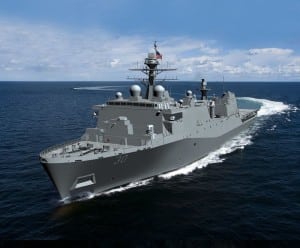
A House Armed Services panel's portion of the fiscal year 2024 defense policy bill seeks to fund another San Antonio-class Flight II amphibious transport dock ship (LPD) and prevent five ships from being retired as planned. The Seapower and Projection Forces subcommittee’s mark, or first draft of their portion of the larger FY ‘24 defense authorization bill, recommends the Navy procure nine ships including two Virginia-class attack submarines, one Columbia-class ballistic missile submarine, two Arleigh Burke-class guided missile destroyers, two…

 By
By 











